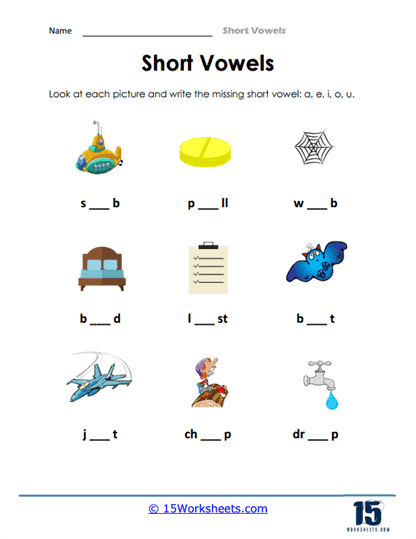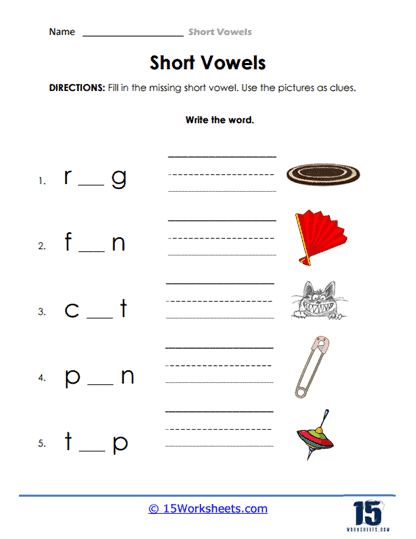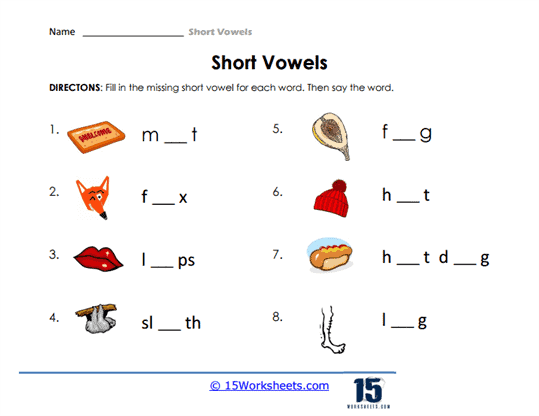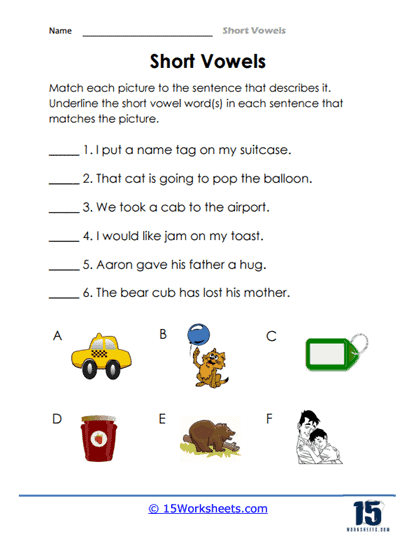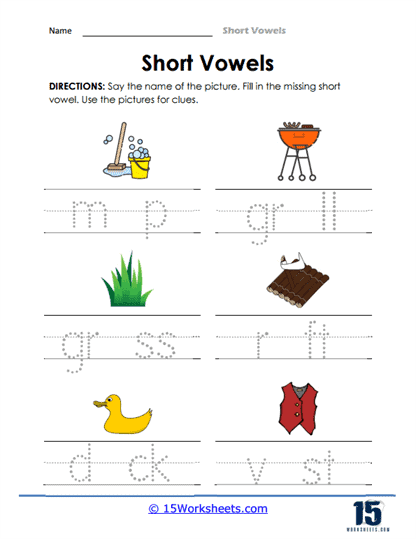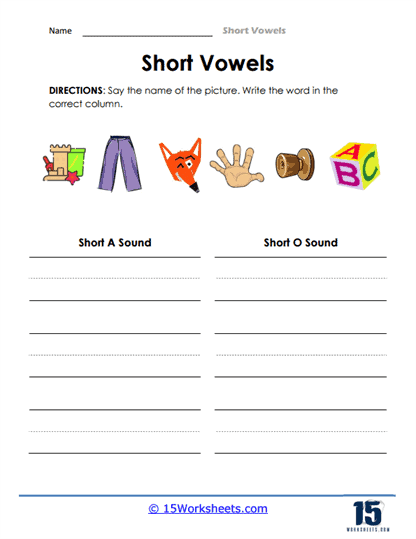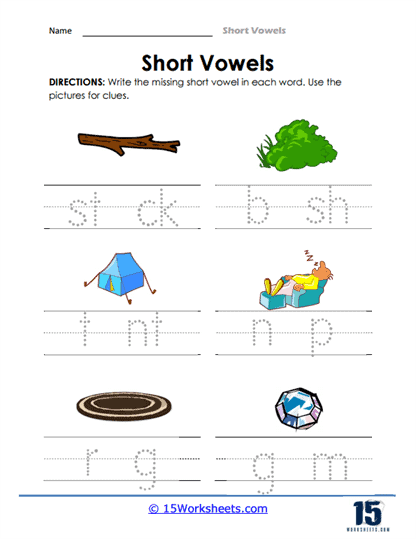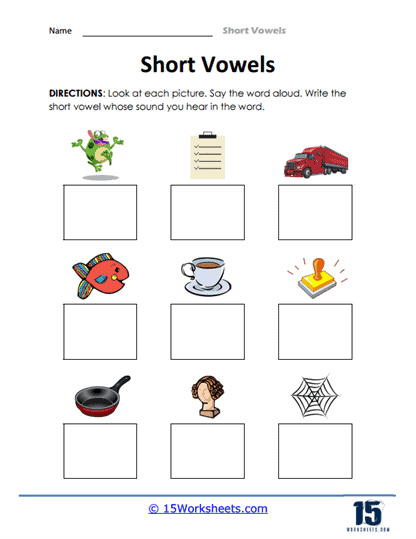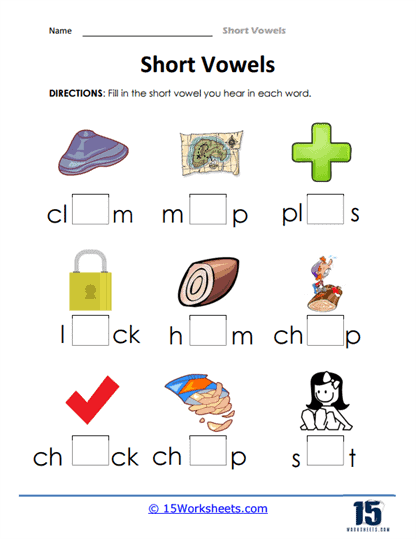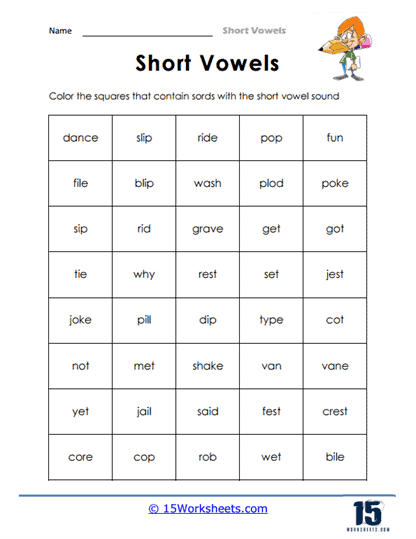Short Vowels Worksheets
All About These 15 Worksheets
The mastery of short vowel sounds is a crucial foundation in early literacy and phonics. Understanding these sounds forms the basis for effective reading, spelling, and language development.
To support students in excelling in this fundamental skill, we proudly present a collection of Short Vowels worksheets. These worksheets are thoughtfully designed to provide students with structured and engaging opportunities to practice and refine their understanding of short vowel sounds.
What are Short Vowels Worksheets?
Short Vowels Worksheets are educational resources designed to help students practice and learn about short vowels, which are the vowel sounds represented by the letters “a,” “e,” “i,” “o,” and “u” in words. These worksheets often include various activities, such as matching, sorting, or writing exercises, that focus on identifying and distinguishing between short vowels.
What Are Short Vowels?
Short vowels are vowel sounds that are produced with a relatively relaxed and neutral position of the mouth, tongue, and vocal cords. They are called “short” vowels because they are typically shorter in duration than long vowels. In English, there are five primary short vowel sounds, each corresponding to one of the five vowel letters – A, E, I, O, and U.
Here is a brief description of each short vowel sound –
Short A (ă) – The short A sound is pronounced as /æ/, similar to the ‘a’ in “cat” or “hat.” The tongue is low and slightly forward in the mouth, and the mouth is open.
More Example Words – Cat, Hat, Bat, Mat, Jam, Gap, Pad, Fan, Tap, Rat
Short E (ĕ) – The short E sound is pronounced as /ɛ/, like the ‘e’ in “bed” or “red.” The tongue is slightly higher and more forward than for the short A sound, and the mouth remains open.
More Example Words – Bed, Red, Pen, Met, Jet, Net, Vest, Bend, Step, Rest
Short I (ĭ) – The short I sound is pronounced as /ɪ/, similar to the ‘i’ in “bit” or “sit.” The tongue is higher in the mouth than for the short E sound, and the mouth is only partially open.
More Example Words – Bit, Sit, Pin, Lip, Mitt, Hit, Dip, Rig, List, Gift
Short O (ŏ) – The short O sound is pronounced as /ɒ/ or /ɔ/, like the ‘o’ in “cot” or “dog.” The tongue is slightly lower and further back in the mouth than for the short A sound, and the mouth is open.
More Example Words – Cot, Dog, Pot, Top, Sock, Box, Cop, Mop, Jog, Drop
Short U (ŭ) – The short U sound is pronounced as /ʌ/, similar to the ‘u’ in “cup” or “mud.” The tongue is further back in the mouth than for the short O sound, and the mouth is only partially open.
More Example Words – Cup, Mud, Hug, Bump, Tug, Sun, Bus, Nut, Pup, Drum
Short vowels are important for reading and writing because they form the basis for many simple words in English, particularly CVC (consonant-vowel-consonant) words. Learning to recognize and pronounce short vowels is essential for developing phonemic awareness and decoding skills, which are critical for reading comprehension and fluency.
The Importance of Short Vowels
Understanding short vowel sounds is of paramount importance for several reasons:
- Reading Proficiency: Accurate recognition of short vowel sounds is fundamental for fluent reading. It enables students to decode words correctly and comprehend text effectively.
- Spelling Competence: Proficiency in distinguishing short vowel sounds enhances students’ spelling skills. When they can differentiate between these sounds, they are better equipped to spell words accurately.
- Phonemic Awareness: Recognizing short vowel sounds fosters phonemic awareness—the ability to identify and manipulate individual phonemes (sounds). This skill is crucial for literacy development and reading comprehension.
- Vocabulary Growth: Learning short vowel sounds exposes students to a wide range of words, enriching their vocabulary and comprehension.
This collection of Short Vowels worksheets is a valuable resource for educators and parents committed to supporting their students’ phonics and literacy development. Proficiency in distinguishing short vowel sounds is a foundational skill that opens doors to reading fluency, comprehension, effective spelling, and vocabulary growth.
By using these engaging worksheets, students will strengthen their ability to recognize and use short vowel sounds with confidence. This collection is an investment in their future success, ensuring they have a solid foundation in phonemic awareness, phonics, spelling, and vocabulary.

